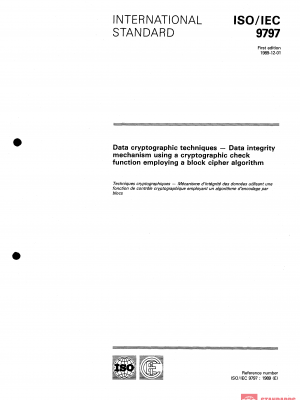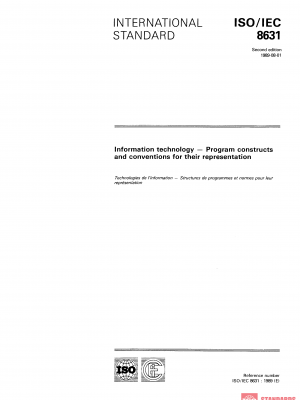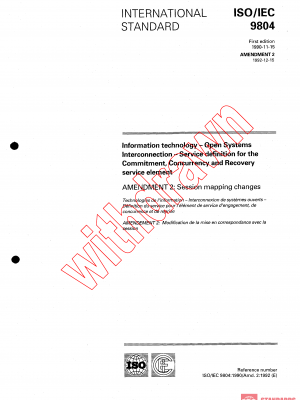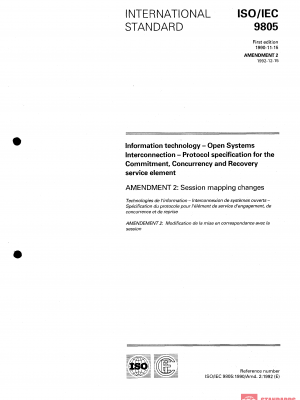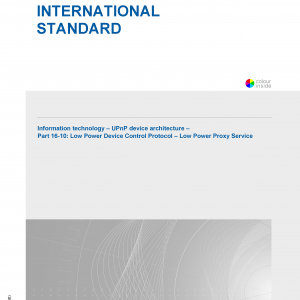ISO/IEC 29341-16-10:2011 PDF
Original price was: $65.00.$50.70Current price is: $50.70.
Information technology — UPnP Device Architecture — Part 16-10: Low Power Device Control Protocol — Low Power Proxy Service
ISO/IEC 29341-16-10:2011(E) describes a service definition which is compliant with the UPnP Device Architecture version 1.0.service. This service-type enables modelling of “Basic Power Management Proxy” function capabilities. Basic Power Management Proxy (BPMPX) is a combination of UPnP service and a control point. As Control Point, Proxy discovers and controls Low Power Device services running in the network, and as UPnP Proxy service, it advertises itself to the network, and responds to actions from low power aware Control Point. [LPARCH] Basic functions that BPMPX does are as follows:
– Receive multicast discovery messages from power managed UPnP devices in order to be. aware of their power states (i.e. the BPMPX will act as Control Point).
– Send multicast or unicast discovery messages (i.e. M-SEARCH) to query UPnP devices and keep track of their power states (i.e. the BPMPX will act as Control Point).
– Send GetPowerManagementInfo action to obtain power management mechanism provided by power-aware devices.
– Should send the appropriate wakeup message to the specified sleeping device when it receives WakeupDevice action from power aware Control Point. [LPARCH]. Act as UPnP service.
– Sending BPMPX service announcements and M-Search replies.
– Respond to SearchSleepingDevices action to provide the information of sleeping devices in network.
– Respond to Wakeup action from Control Point. (Wake up action is directed to the low power devices and not for waking up the BPMPX).
| Edition | 2011 |
|---|---|
| Standard Part No | 26 |
| Published Date | 2011 |
| Published By | International Standardization Organisation /International Electrotechnical Commission |
| Page Count | 12 |


